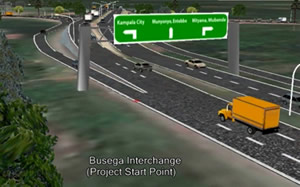Traffic and transportation and modelling is a core specialization of TIMCON Associates.
As transportation systems become more complex, advanced approaches are required to assist in the analysis and finding solutions to the engineering challenges. Both analytical and numerical approaches are used in transportation modelling.
Transportation models are needed to analyse complex real life problems due to  their cost, safety, flexibility and reproducibility benefits. Models are used in scenario analysis to quickly answer “what ifs” questions which may arise. The models rely on the use of statistical descriptors to define the characteristics of various inputs which may include traffic data, roadway data, demographic information and vehicle data.
their cost, safety, flexibility and reproducibility benefits. Models are used in scenario analysis to quickly answer “what ifs” questions which may arise. The models rely on the use of statistical descriptors to define the characteristics of various inputs which may include traffic data, roadway data, demographic information and vehicle data.
The model analyses and provides outputs of the system performance. The models are deterministic relying on formulae to provide the same outputs so long the inputs are the same. Others are Monte Carlo simulation models that use random numbers to assess system variability of stochastic processes such as traffic flows.
Transportation models generally fall into three categories:
- Demand forecasting models that use population and employment data to estimate future traffic demands in transportation networks;
- Micro-simulation models that use detailed traffic and network data to calculate the system performance in terms of traffic operations and level of service; and
- Traffic operational analysis models that rely on formulae to calculate detailed intersection level of service, volume to capacity ratios as well as queues and delays.
The characteristic and examples of each modelling regime is presented in the diagram below:
Micro-simulation modelling is a core expertise and service of TIMCON. Principals  of TIMCON have extensive experience and postgraduate training in modelling and are recognised as experts with numerous publications and conference papers in this area. TIMCON has successfully used Paramics, AIMSUN and VISSIM Micro-simulation models on various recent studies.
of TIMCON have extensive experience and postgraduate training in modelling and are recognised as experts with numerous publications and conference papers in this area. TIMCON has successfully used Paramics, AIMSUN and VISSIM Micro-simulation models on various recent studies.
Traffic micro-simulation models realistically model individual vehicles on detailed networks. Vehicles are followed from entry into the network up to exit points and their status recalculated periodically. Various models including car following, gap acceptance and lane change rules are applied to control vehicular behavior. Results are obtained as an aggregate for all vehicles in the system considered. Microsimulation models require detailed network, intersection control and vehicles characteristics data.
networks. Vehicles are followed from entry into the network up to exit points and their status recalculated periodically. Various models including car following, gap acceptance and lane change rules are applied to control vehicular behavior. Results are obtained as an aggregate for all vehicles in the system considered. Microsimulation models require detailed network, intersection control and vehicles characteristics data.
Demand forecasting is needed to estimate future travel patterns and hence the future traffic volumes and the network requirements needed to support the expected volumes. Demand forecasting utilizes the fundamental transportation principles and demographic data including population and employment data to estimate travel characteristics including trip generation, trip distribution, modal split and trip assignment onto the available roadway. We utilize TRANCAD, VISUM or EMME for demand forecasting analysis.
We also often conduct household surveys as part of a comprehensive demand forecasting study. These studies provide cross-sectional household data and travel characteristics in terms of the number of trips made by each member of the household and the typical origin and destination patterns. The data is usually obtained from a sample of the population and is expanded to obtain aggregate values for the entire urban centre. The information is usually coupled with specific growth allocation plans from the municipality to obtain a more accurate estimate of the future travel patterns in the jurisdiction.
Related to this is network assessment in which traffic flows through the entire urban network is assessed, taking into account roadway capacities and intersection controls such as traffic signals and stop signs and identifying problem areas that need addressing. Either micro-simulation or demand forecasting models are utilised in network assessment. Coupled with future traffic volumes from demand forecasting efforts, network assessment provides an invaluable tool in identifying present and future roadway requirements for an urban network.

